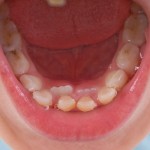
Shuichi Suetani and Gaj Panagoda explore the World Federation of ADHD International Consensus Statement published in 2021, which contains “208 evidence-based conclusions about attention-deficit hyperactivity disorder.
[read the full story...]
Shuichi Suetani and Gaj Panagoda explore the World Federation of ADHD International Consensus Statement published in 2021, which contains “208 evidence-based conclusions about attention-deficit hyperactivity disorder.
[read the full story...]
This review of prevalence of root filled teeth in the adult population worldwide included 76 observational studies. The findings suggest that 8.2% (95%CI; 7.3% to 9.1%) of teeth has been root filled and that 55.7% (95%CI; 49.6% to 61.8%) of people had at least one tooth root filled.
[read the full story...]
This review of the prevalence of periodontal disease among pregnant women included 20 studies. The findings suggest an overal prevalence of 40% (95%CI; 15 to 100%) based on 3 studies using the same assessment criteria.
[read the full story...]
Natalie Kashirsky summarises a qualitative study finding that young people think “smartphone apps are cool”, but possibly unhelpful for coping with self-harm.
[read the full story...]
This review of the effectiveness of glass ionomer cement (GIC) restorations in preventing new caries in primary or permanent dentitions included 10 RCTs. The findings suggest that GIC restorations have a better preventive effect that other materials but the amount and quality of evidence is limited.
[read the full story...]
Theo Kyriacou and Andie Ashdown blog about a systematic review that explores the barriers and facilitators to engagement with digital mental health interventions, which has some interesting findings for app developers and researchers.
[read the full story...]
Alex Pike and Jonathan Roiser appraise and summarise a recently study in the Brain Stimulation journal, which looks at the long-term efficacy and quality of life of deep brain stimulation for severe depression.
[read the full story...]
The use of dental implants has steadily increased and in recent years the largest increase has been noted in patients aged between 65-74 years. This age group are also likely to be on long-term prescription of antiplatelet and oral anticoagulants as prophylaxis against thromboembolic events. Dental implant placement as a surgical procedure presents a risk [read the full story…]

In this review Iris Vaid looks at a systematic review of the dental pulp response to silver diamine flouride (SDF) treatment. Only a small number of studies focused on the biological effects of SDF on the dental pulp and none of them were clinical trials.
[read the full story...]
This review assessing the effect of radiotherapy on the survival of dental implants in patients with head and neck cancer included 7 studies involving a total of 441 patients. implant survival rate was lower in irradiated patients with odds ratio = 4.77 (95%CI; 2.57 to 8.89) based on 4 studies.
[read the full story...]